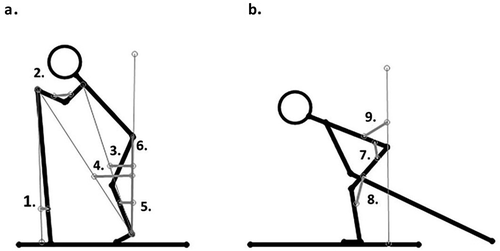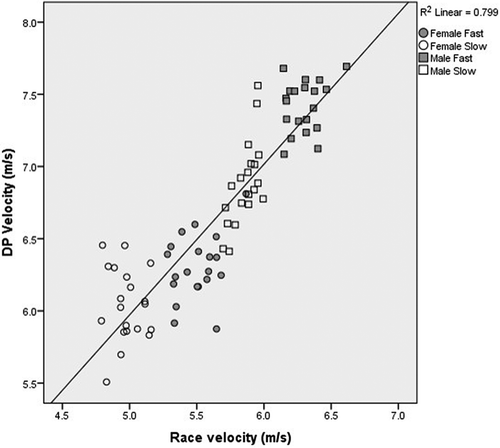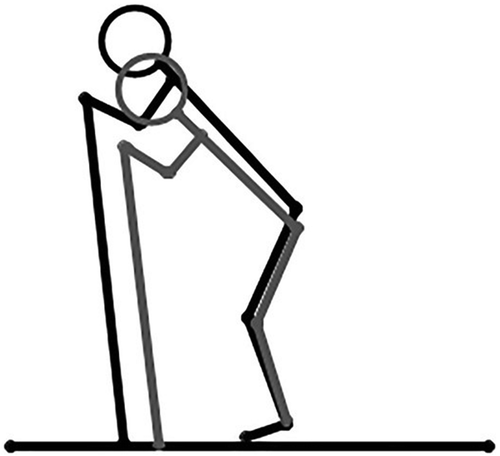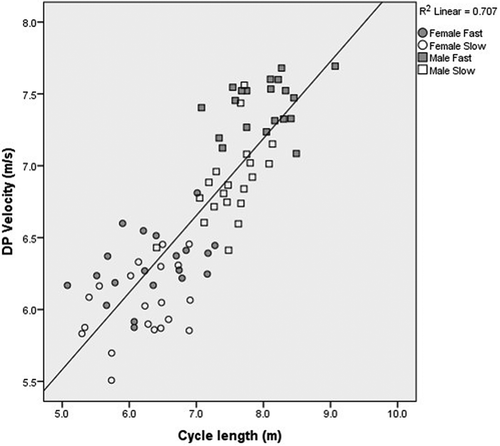Figures & data
Figure 1. At pole plant (a) and pole-off (b) the following body angles were measured: pole angle in relation to vertical (1), elbow angle (2), ankle-shoulder to vertical (3), ankle-hand to vertical (4), tibia angle to vertical (5) and ankle-hip angle to vertical (6), hip angle (7) knee angle (8) and trunk angle to vertical (9).

Table 1. Cycle and pole characteristics for the four sub-groups of female and male cross-country skiers employing the double-poling technique on the flat section of the 10/15 km classical race at the Norwegian cross-country skiing championships in Tromsø, 2016.
Figure 2. The relationship between double poling velocity and mean race velocity during the 10/15 km classical race at the Norwegian cross-country skiing championships in Tromsø, 2016 for the four sub-groups of skiers (N = 20 for each group, in total N = 80).

Figure 3 . Mean body position during pole plant for the female (grey lines) and male (black lines) skiers. The skiers are scaled according to mean body height.

Table 2. Joint and pole kinematics at pole plant and pole off for the four sub-groups of female and male cross-country skiers employing the double-poling technique on the flat section of the 10/15 km classical race at the Norwegian cross-country skiing championships in Tromsø, 2016.
Table 3. Relationships between double poling velocity and cycle characteristics/measured angles for the sex and performance level of cross-country skiers employing the double-poling technique on a flat section of the 10/15 km classical race at the Norwegian cross-country skiing championships in Tromsø, 2016.

